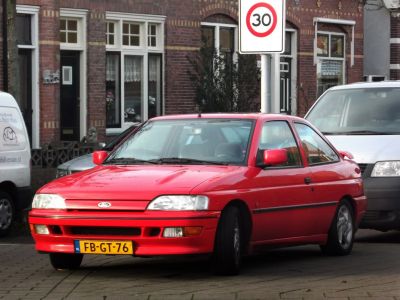 1997 Peugeot 306 Hatchback (facelift 1997) Dimensions, Size & Specs
1997 Peugeot 306 Hatchback (facelift 1997) Dimensions, Size & SpecsMeasurements of the 1997 Peugeot 306 Hatchback, engineered for optimal performance and comfort
| Dimensions | |
|---|---|
| Length: | 4030 mm158.7 in13.2 ft |
| Width: | 1680-1690 mm66.1-66.5 in5.5-5.5 ft |
| Height: | 1350-1380 mm53.1-54.3 in4.4-4.5 ft |
| Ground Clearance: | 120 mm4.7 in0.4 ft |
| Trunk Capacity: | 338-340 liter11.9-12.0 cu ft |
| Trunk Capacity (Max): | 640-1146 liter22.6-40.5 cu ft |
| Weight Specifications | |
| Curb Weight: | 1030-1215 kg2271-2679 lbs |
| Maximal permitted Weight: | 1480-1630 kg3263-3594 lbs |
| Tire Specifications | |
| Rims Sizes: |
|
| Tire Sizes: |
|
The Peugeot 306 Hatchback facelift, produced from 1997 to 2002, is a compact and practical vehicle that offers a balanced combination of style, size, and versatility. Measuring 4030 mm (158.7 inches) in length and between 1680 mm to 1690 mm (66.1 to 66.5 inches) in width, the 306 fits comfortably into the compact hatchback segment, making it ideal for urban driving and maneuverability. Its height ranges from 1350 mm to 1380 mm (53.1 to 54.3 inches), contributing to a low and sporty profile.
The curb weight varies from 1030 kg up to 1215 kg (2271 to 2679 lbs), depending on the specific trim and equipment, while the maximum permissible weight ranges between 1480 kg and 1630 kg (3263 to 3593 lbs). This weight class makes the 306 a lightweight and agile option within its category. Ground clearance is set at 120 mm (4.7 inches), balancing handling dynamics with everyday usability.
Luggage capacity is well thought out for a compact hatchback, with 338 to 340 liters (11.9 to 12 cubic feet) available with rear seats up, expanding dramatically to between 640 and 1146 liters (22.6 to 40.4 cubic feet) when the rear seats are folded down. This flexibility enhances the car's practicality for varied cargo needs.
The Peugeot 306 facelift supports a range of rim sizes including 14-inch and 15-inch wheels, paired with tire sizes such as 185/65 R14 and 195/55 R15. Tire speed and load ratings vary from 14-inch tires with T and H ratings to 15-inch tires with H and V ratings, catering to different driving preferences and conditions.
Overall, the 1997 facelift Peugeot 306 hatchback remains a strong competitor in the small family car segment with its compact footprint, lightweight construction, and practical luggage space, making it a well-rounded choice for those seeking a reliable and efficient vehicle.
Discover the standout features that make the 1997 Peugeot 306 Hatchback a leader in its class
Have a question? Please check our knowledgebase first.
The Peugeot 306 Hatchback facelift model produced from 1997 to 2002 measures 4030 mm (158.7 inches) in length. Its width ranges between 1680 mm and 1690 mm (66.1 to 66.5 inches), while its height varies from 1350 mm to 1380 mm (53.1 to 54.3 inches). These dimensions position the 306 as a compact hatchback, suitable for urban environments and daily driving, balancing interior space and manageable external size.
The curb weight of the facelifted Peugeot 306 Hatchback ranges from 1030 kg to 1215 kg (approximately 2270 to 2679 pounds), depending on the specific trim and configuration. Its maximum allowable weight, which includes passengers and cargo, varies from 1480 kg to 1630 kg (3263 to 3594 pounds). This weight range reflects its compact design, contributing to nimble handling and efficiency, while allowing a practical payload capacity for a car of its class.
The Peugeot 306 Hatchback facelift offers a luggage capacity of 338 to 340 liters (11.9 to 12 cubic feet) with the rear seats in their standard upright position. When the rear seats are folded down, the cargo space significantly increases to between 640 liters and 1146 liters (22.6 to 40.5 cubic feet), making it versatile for carrying larger items or increased luggage for travel. This flexibility enhances its practicality as a compact family car.
The Peugeot 306 Hatchback facelift from 1997-2002 has a ground clearance of 120 mm (approximately 4.7 inches). This relatively low ride height benefits handling and aerodynamics, providing a sportier driving experience and stable road grip. However, it requires care on uneven terrain or speed bumps, as the lower clearance may pose challenges when encountering sharp obstacles or rough roads.
The facelifted Peugeot 306 Hatchback is equipped with tire sizes including 185/65 R14, 195/55 R15, and variants with speed ratings such as T, H, and V. Corresponding rim sizes are primarily 14 and 15 inches in diameter, matching these tire options. These sizes strike a good balance between ride comfort, handling precision, and tire availability, contributing to the vehicle’s responsive driving characteristics and everyday usability.
Yes, the Peugeot 306 Hatchback facelift fits comfortably into a standard residential garage. With a length of 4030 mm (158.7 inches) and width up to 1690 mm (66.5 inches), it is smaller than the average garage dimensions, which typically range around 6 meters (20 feet) in length and 2.4 to 3 meters (8 to 10 feet) in width. Its height of up to 1380 mm (54.3 inches) poses no issues for head clearance, making parking hassle-free for urban or suburban homeowners.
Compared to the pre-facelift Peugeot 306 models produced before 1997, the facelifted 306 Hatchback introduced subtle changes that slightly refined its dimensions. The length remained around 4030 mm, maintaining its compact form, while the width and height were modified slightly within the range of 1680-1690 mm and 1350-1380 mm respectively, providing marginally improved interior space and aerodynamic performance. Overall, the facelift focused more on styling and mechanical improvements rather than drastic size changes.
When compared with other popular compact hatchbacks from the late 1990s and early 2000s, such as the Volkswagen Golf Mk4 or Ford Focus first generation, the Peugeot 306 facelift is slightly shorter but with comparable width and height. The Golf Mk4, for instance, measures about 4215 mm (166 inches) in length, making the 306 more compact yet offering competitive luggage capacity and interior room. Its size makes it ideal for city driving while still competing well against European rivals in terms of space and functionality.
The Peugeot 306 Hatchback facelift (1997-2002) is recognized for its improved aerodynamics, updated front and rear styling, and refined interior design compared to earlier versions. Mechanically, it offered a range of petrol and diesel engines balancing performance and economy. It featured nimble handling, making it popular among drivers valuing agile city cars with a sporty touch. Safety improvements, better sound insulation, and upgraded trim options enhanced overall comfort and appeal during its production run.
The facelifted Peugeot 306 Hatchback offered various engine options, ranging from economical 1.1 and 1.4-liter petrol variants to more powerful 2.0-liter gasoline and turbocharged diesel engines. Fuel efficiency varied accordingly: smaller engines could achieve approximately 6-7 liters per 100 km (33-39 mpg US), while larger or sportier engines consumed more fuel. The car's lightweight design and aerodynamic improvements from the facelift helped maintain commendable performance and good fuel economy for a compact car of its era.
Discover similar sized cars.

| Production: | 1990-1992 |
|---|---|
| Model Year: | 1991 |
| Length: | 4040 mm159.1 in |
| Width: | 1692 mm66.6 in |
| Height: | 1340-1395 mm52.8-54.9 in |

| Production: | 2019-2021 |
|---|---|
| Model Year: | 2019 |
| Length: | 4075 mm160.4 in |
| Width: | 1760 mm69.3 in |
| Height: | 1380 mm54.3 in |
